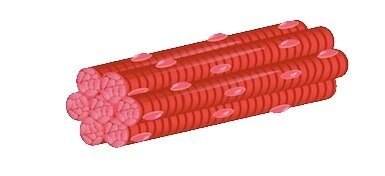Muscular System
Paraxial mesoderm and the myotome region of the somites give rise to most of the muscles in the developing human embryo. The different types of muscles in the human body include skeletal, smooth, and cardiac muscles and their development has been described below.
Skeletal Muscles
The process of development of the skeletal muscles can be summarized as follows:
Myotomes within somites split into muscle forming parts that will give rise to muscles of the various parts of the body
Muscle precursor cells (myoblasts) fuse to form myotubes and multinucleated muscle fibers
Through development, the microfibrils form further and actin and myosin striations become visible
By the 9th week of development, most of the muscle groups in the body have formed
Smooth Muscles
The process of development of the smooth muscles of the viscera and gastrointestinal tract can be summarized as follows:
They develop from splanchnic mesoderm
With the exception of the following smooth muscles with are derived from ectoderm:
Muscles of the pupil
Erector pili muscles
Smooth muscles associated with salivary, lacrimal, and mammary glands
Developing blood vessels surround the mesenchyme of a region to form smooth muscles while larger vessels such as the aorta and pulmonary vessels will receive contributions from the neural crest cells
Cardiac Muscles
The process of development of the cardiac muscles can be summarized as follows:
They develop from splanchnic mesoderm that surrounds the heart tube
Cardiac myoblasts remain as individual structures that are connected by intercalated discs
Clinical Notes:
Muscular dystrophy - this occurs as a result of muscular tissue wasting away




